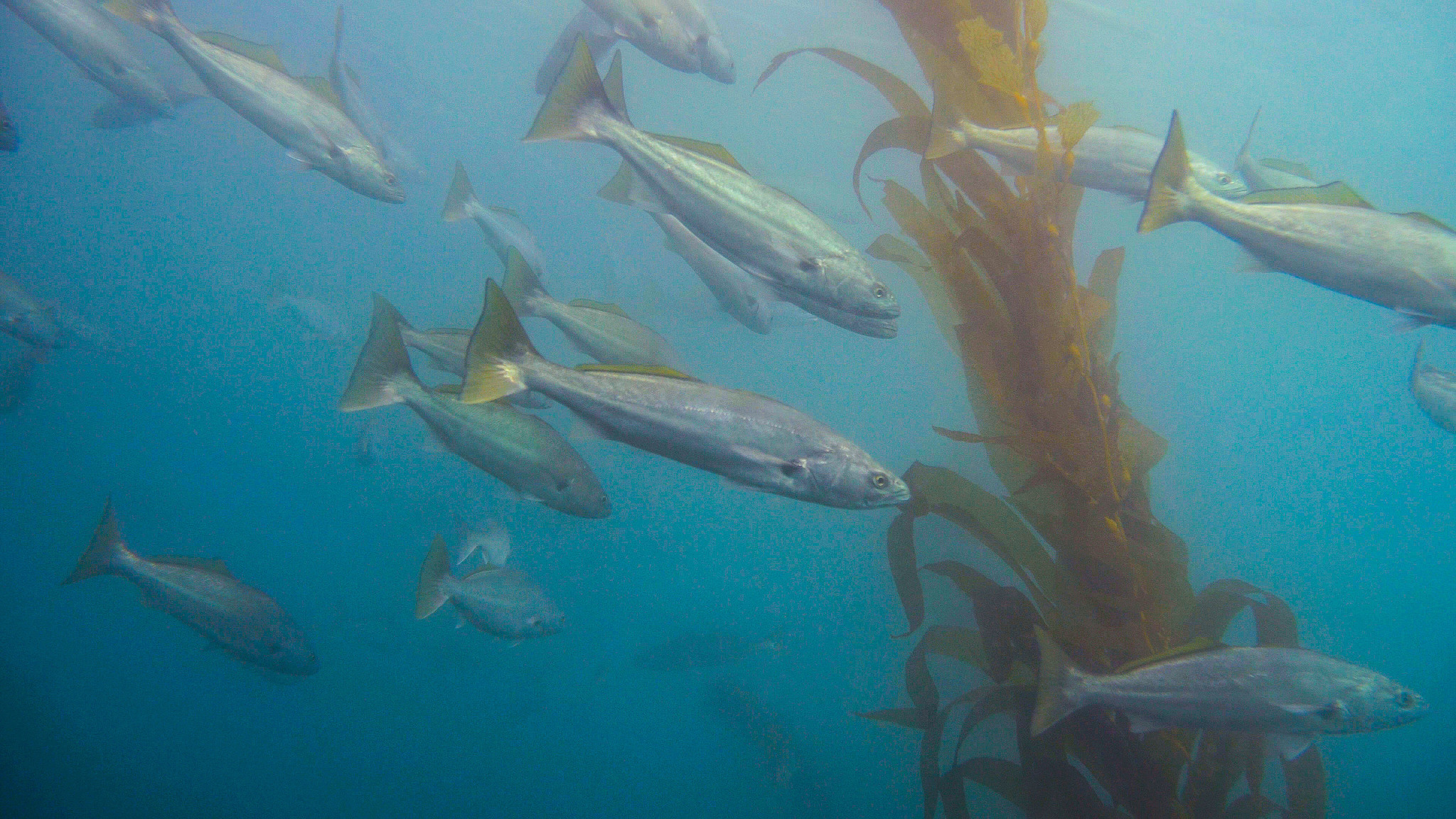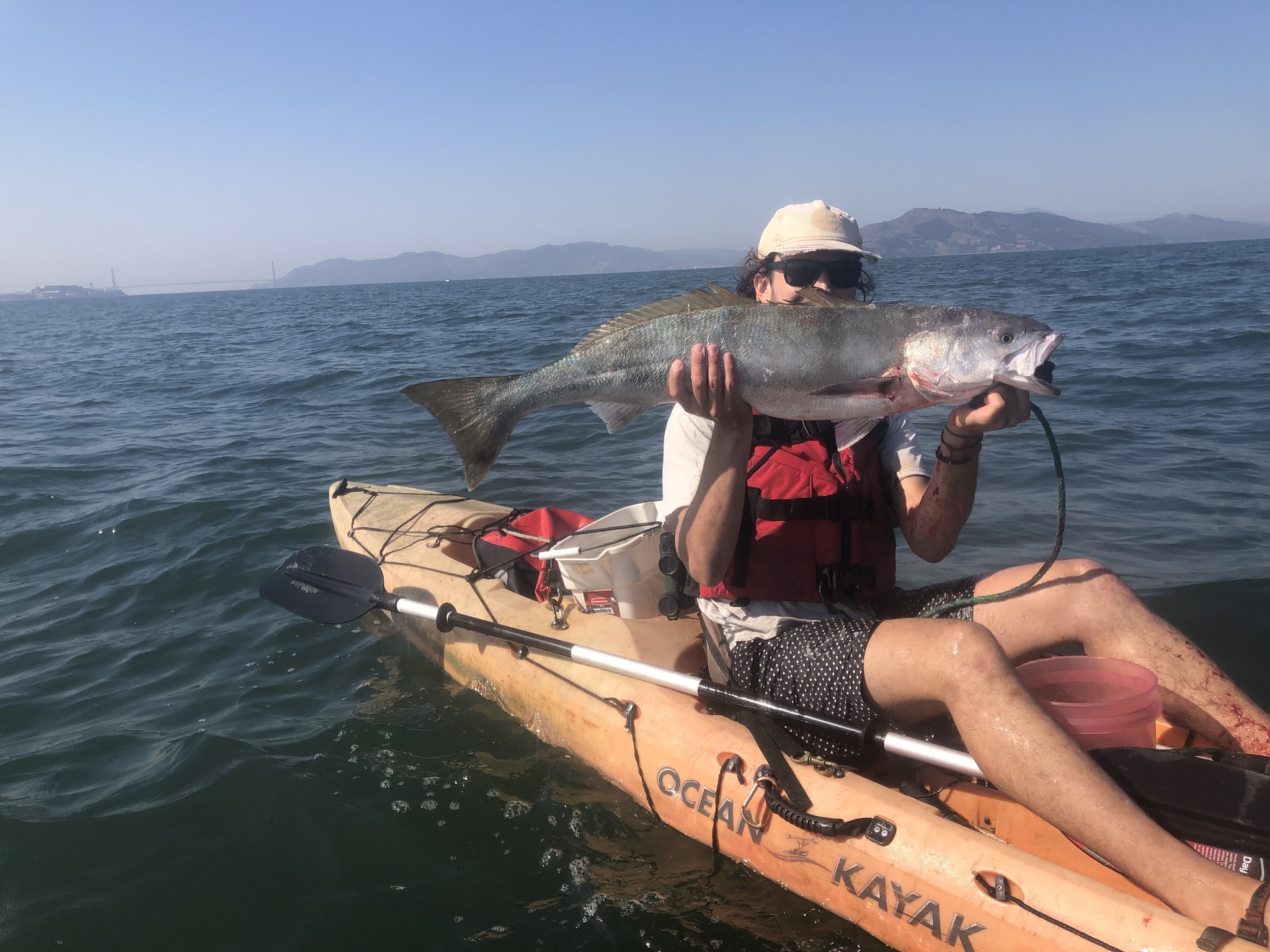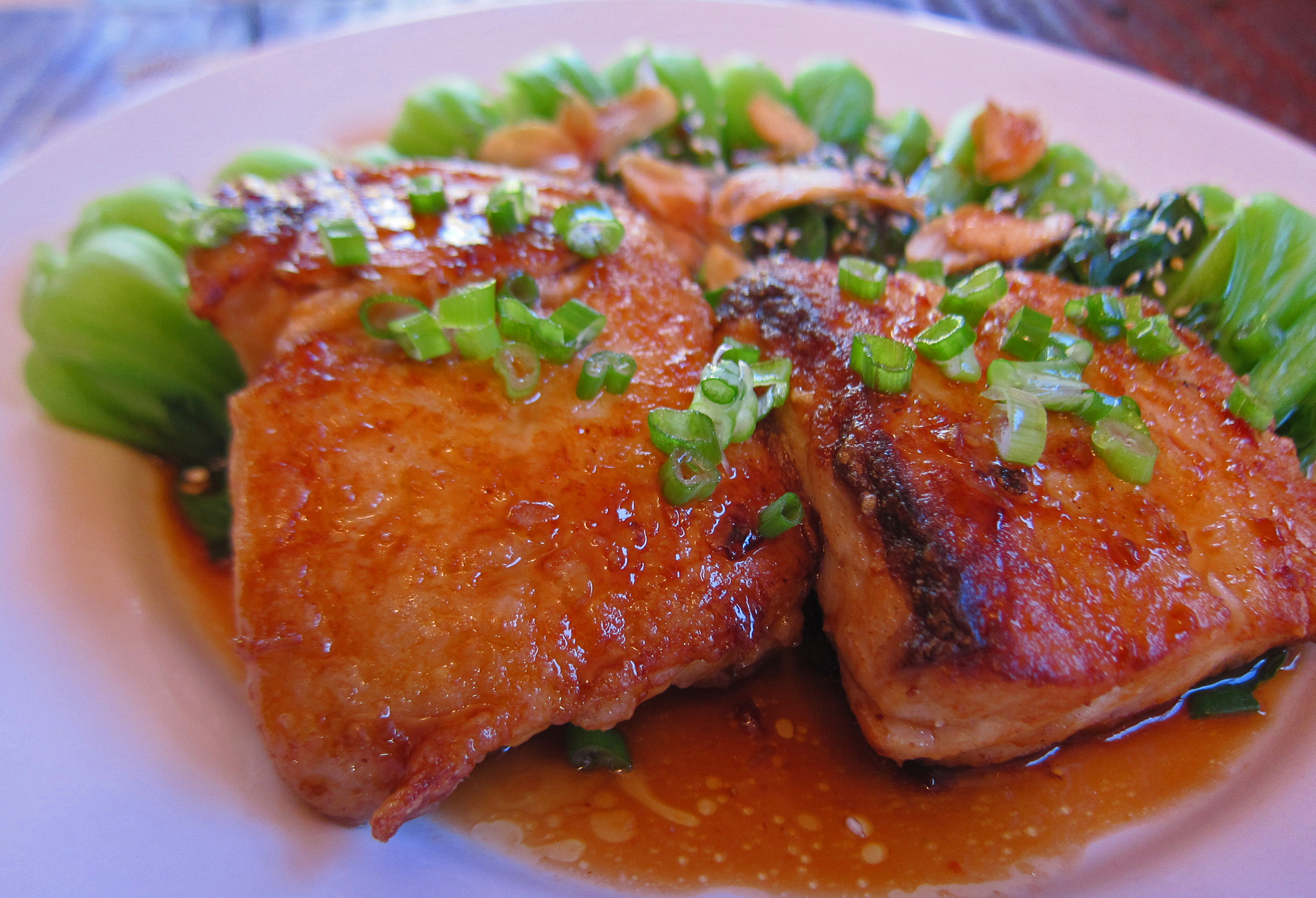Atractoscion nobilis
Central Coast (South of Half Moon Bay to Point Conception)
Santa Barbara (Point Conception to Point Dume)
South Coast (Point Dume to Mexico border)
Firm fish
Flakey fish
Wild caught
![D.R. Robertson, STRI [14] White Seabass](http://casg-legacy.ucsd.edu/sites/default/files/white-seabass-robertson.jpg)
The Science

Taxonomic description
- Is the largest species of croaker (family: Sciaenidae).
- White seabass emits croaking sounds by hitting the abdominal muscle against the swim bladder. [2]
- Is a large, mobile fish with an average size of 9 kg (20 lbs) and just over 1 m (3 ft), but the largest recorded white seabass in California was 42 kg (93 lbs) and 1.5 m (5 ft) long. [1,2]
- Blue to gray in color on the back, with a silver belly; and has dark vertical stripes on its back as a juvenile.
Distribution
- Ranges from Magdalena Bay, Baja California, Mexico to the San Francisco area, and in the northern Gulf of California. [1,2]
- During the strong El Niño of 1957-1959 (i.e., warm waters), it was found as far north as Juneau, Alaska. [2]
- Center of the population seems to be off central Baja California. [2]
Life history
- Spawning usually occurs from March to September with a peak in late spring -- early summer. [1]
- Broadcast spawners: it releases gametes in the water for fertilization. Release is usually at night to reduce predation on the eggs, which are the largest (1.3 mm or 0.5” diameter) of any croaker on the west coast. [1,2]
- The age of maturity is uncertain, but all have probably spawned at least once by age 6 (81 cm or 32’ long) and can live to 20 years. [2]
Habitat
- When newly hatched, the seabass inhabits open, shallow coastal waters (4-8 m or 12-30 ft deep), sometimes hanging out in drifting seaweed.
- Juveniles (ages 1-3 yr) may move into protected bays where they use eelgrass beds for cover and feeding grounds; older juveniles are found near piers and jetties with kelp beds nearby.
- Adults use many habitats: rocky reefs, kelp beds, offshore banks or the open ocean. [1]
- Can be found travelling in schools or as a solitary individual. [1]
- Adults prey on Pacific mackerel, Pacific anchovies, Pacific herring, Pacific sardines, market squid and pelagic red crabs. [1,2]
- There are few predators of the white seabass, but they include other fish, sharks, sea lions, and humans. [1]
- A mix of human activities (pollution, overfishing and habitat destruction) and natural environmental conditions contributed to the long term decline of this species but spawning in captivity and release of seabass has enhanced populations. [1,5]
The Fishery

Seasonal availability
- June—March if the optimum yield remains below 1.2 million lbs for the season.
Regulatory and managing authority
- As established by the Marine Life Management Act, the California Fish and Game Commission regulates the fishery, and the California Department of Fish and Wildlife manages this fishery through the White Seabass Fishery Management Plan. [3]
- Because this fishery often utilizes drift gillnets, it falls under the jurisdiction of NOAA fisheries under the Marine Mammal Protection Act. [10]
Gear type
- Mostly caught by drift gillnets, some hook-and-line.
- Gear regulations limit bycatch of non-target species & damage to environment (use of purse seine or round haul nets to harvest white seabass is prohibited). [1,5]
Status of the fishery
- Stocks are recovering off the California coast after declines in the mid to late 1900s. [3]
- Relatively resilient to fishing pressure given young maturity age, high fecundity, & a fishing season that is sensitive to this fish's breeding season.
- Stocks are not currently overfished, but are monitored. [1]
- Monterey Bay Aquarium’s Seafood Watch classifies this fish as a 'good alternative'. [4]
Potential ecosystem impacts
- Hook-and-line & drift gillnets don’t contact the seafloor, but weighted set gillnets can damage seafloor.
- Bycatch of non-target species is minimal due to gear regulations.
The Seafood

Edible portions
- Sold fresh as steaks, fillets, or whole.
Description of meat
- Low-fat fish with a mild flavor.
- White seabass is known for its firm, meaty texture.
- The meat has thick, large, white flakes.
Culinary uses
- To prepare fresh filets for cooking, cut the fillet down the middle and trim off the dark “blood line”. [9]
- May be kept frozen.
- Typical cooking methods include grill, sear, bake, broil, or sauté, it may also be steamed or poached but is firm enough where these methods aren’t necessary.
- For cooking tips, visit Youtube. [9]
- For recipe suggestions, visit Yummly. [8]
Nutritional information
- Information is provided for mixed species, raw. [6]
Toxicity report
- There are no known contaminants. [4]
Seasonal availability
- It is available in San Diego from June–March. [7]
References
[1] California Department of Fish and Wildlife. 2019. White Seabass, Atractoscion nobilis, Enhanced Status Report. Web. https://marinespecies.wildlife.ca.gov/white-seabass/. Accessed 16 Sept 2020.
[2] Biology of the white seabass. 2012. Pfleger Institute of Environmental Research. Web. https://pier.org/rs_wsb_biology.php. Accessed 16 Sept 2020.
[3] California Department of Fish and Game. n.d. White Seabass Fishery Management Plan. Web. https://wildlife.ca.gov/Conservation/Marine/WSFMP. Accessed 16 Sept 2020.
[4] Seafod Watch. 2018. White Seabass and California Yellowtail. Web. https://www.seafoodwatch.org/-/m/sfw/pdf/reports/s/mba_seafoodwatch_cayellowtail_whiteseabassreport.pdf. Accessed 16 Sept 2020.
[5] Crooke, S., ALouie. 2006. White Seabass. Status of the Fisheries Report. California Deptartment of Fish and Wildlife. https://wildlife.ca.gov/Conservation/Marine/Status#28027679-status-of-the-fisheries-report-through-2006. Accessed 16 Sept 2020.
[6] "Fish, sea bass, mixed species, raw." SELF Nutrition Data: Know What You Eat. USDA SR-21. https://nutritiondata.self.com/facts/finfish-and-shellfish-products/4117/2. Accessed 16 Sept 2020.
[7] Crooke, S. A. Louie.. 2006. White Seabass, Atractoscion nobilis. Status of the Fisheries Report 2006. California Department of Fish and Wildlife. https://nrm.dfg.ca.gov/FileHandler.ashx?DocumentID=34417&inline=true. Accessed 16 Sept 2020.
[8] Yummly, White Seabass Recipes. www.yummly.com/recipes/white-sea-bass. Accessed 16 Sept 2020.
[9] “Cooking Tips White Seabass: Farmers Market Bag, Catalina Offshore Products. www.youtube.com/watch?v=rhfMaMZM4GA. Accessed 16 Sept 2020.
[10] NOAA Fisheries. 2020.CA Yellowtail, Barracuda, White Seabass Drift Gillnet Fishery - MMPA List of Fisheries. Web. https://www.fisheries.noaa.gov/national/marine-mammal-protection/ca-yell.... Accessed 10 December 2020.
[11] uzun. iNaturalist. 2018. Digital image. Web. https://www.inaturalist.org/photos/17872930. Accessed 26 February 2021.
[12] josiahclark. iNaturalist. 2020. Digital image. Web. https://www.inaturalist.org/photos/103146110. Accessed 26 February 2021.
[13] K, K. flickr. 2012. White Seabass with Oyster Sauce-Chinkiang Vinegar-Honey Glaze. Digital image. Web. https://flickr.com/photos/mmm-yoso/9178348134. Accessed 26 February 2021.
[14] Robertson, D.R. Smithsonian Tropical Research Institute (STRI), https://stri.si.edu/scientist/d-ross-robertson
